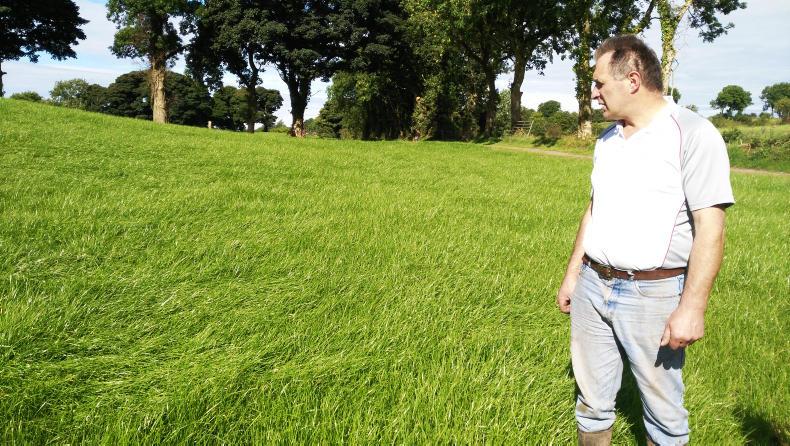As I visit farms this week, the contrast in weather and ground conditions on project farms is significant. In Tyrone, persistent rain over the past fortnight is challenging for both Robin Clements and Kevin McGrade.
Both farmers’ herds have started calving and they are hoping for some settled conditions to capitalise on the wedge of grass now available on both farms. However, cows have been housed on both farms over the past two weeks, with only three days’ grazing on Kevin’s farm last week.
Both farmers have returned to early spring herd management with on/off grazing and housing of young stock.
Robin said: “Grass reseeding has been put on hold, which is disappointing, as I was planning on getting another 20 acres reseeded this year. We have third-cut silage which is ready to bale, but ground conditions need to improve before we will capture this.”
In contrast, Nigel Corbett in Co Down continues with grazing on his farm outside Dromara, not far from Banbridge.
“We have had a good grass growth year so far. Reseeding was considered for this autumn, but we opted to allocate this money to soil fertility instead, including lime and chemical fertiliser.
“Soil fertility of the grazing block has improved, with chemical phosphate and potash applied in the spring of this year. We are focusing on the grazing block this year, with the intention to work on the outlying land next year.
“Weekly grass measurement clearly identifies underperforming paddocks on the grazing block, which I will consider for a reseed next spring.
“We have been very lucky this year with ground conditions. The infrastructure on the farm is not ideal, especially the laneways. We need to improve access to paddocks and provide multiple access points and water drinkers.
“This year, we have used temporary fence lines and back-fenced cows to manage grazing. While this worked this year, we know something more permanent is needed to cope with wet conditions on the farm.
“Our rolling 12-month purchased feeding rate is coming down and we are replacing it with grazed grass. Last month’s feed rate was 0.15kg/litre, while the same time last year was 0.21kg/litre. This represents a £600 saving in purchased feed for one month.
“Grass growth on the farm is currently at 10.5tDM/ha with a target of 11tDM/ha for this year. Cows are currently allocated 18kg DM/day and are on a 25-day rotation,” he concluded.
New reseed up and going
Bill Brown Millisle, Co Down
Bill Brown has just completed 21 acres of reseeding work and as the new plants peep above the surface, he describes what happened.
“We went for a two-variety mix with 0.5kg of clover included. Abergain and Aberchoice have been used, simply because both are rated very highly on the recommended variety list both north and south.
“I have seen the mixture first-hand on a farm in Tipperary and was very impressed with the growth characteristics of the grass.
“Both grass varieties are late-heading and the mix is 40% tetraploid and 60% diploid. This is the most tetraploid I have ever used in a grass mixture on the farm as we are looking for its high growth rate and high grass quality (digestability) characteristics. This grass is in dry land on the grazing platform, so it must perform well.
“The old swards were killed off with glyphosate before the plough moved in. A single grass mixture was used as mentioned above at a rate of 14kg/acre.
Compound fertiliser
“All the reseeded area received lime and a compound fertiliser into the seed bed. The 16:16:16 compound was applied based on soil samples taken this year, with on average 2.5 bags/acre applied over the 21 acres.
“Management of a new reseed through spraying and grazing is critical on the farm and I consider it equally as important as the method used to reseed in the first place.
“Early grazing allows light into the base of the plant to encourage tillering. Given this is an autumn reseed, ground conditions may not allow the cows to graze this the first time, so I will probably use young stock, which will be lighter on the ground. Getting a weed spray on can also be a problem, as temperatures drop around this time.”






 This is a subscriber-only article
This is a subscriber-only article






SHARING OPTIONS: